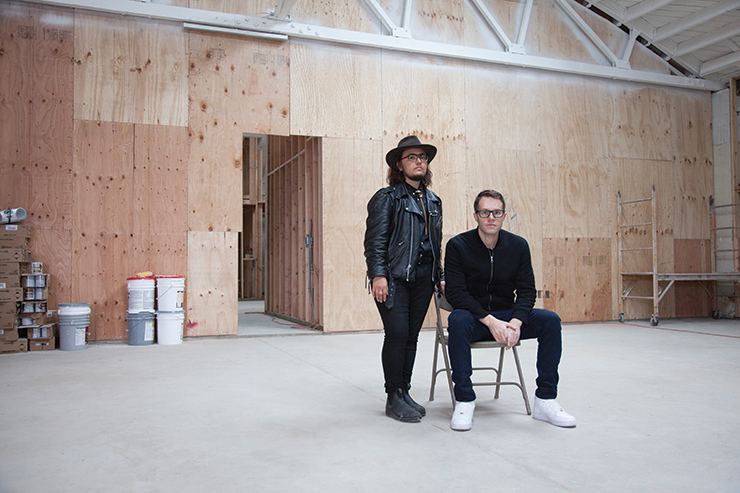
At PSSST, a new nonprofit artists’ space that opened in June in Los Angeles’ booming, formerly industrial Boyle Heights district, co-founders Barnett Cohen and Jules Gimbrone ask that you put away your phone. And unlike the other galleries in the neighborhood—Maccarone, Venus and 356 Mission among them—their openings won’t be serving alcohol or renting any taco trucks.
“If you value art, and if you value the artist,” says Cohen, “be with the work that they created, and ask more of yourself in terms of being present with it.”
It’s the mindset of a very different kind of space. At PSSST, Cohen and Gimbrone identify neither as gallerists nor curators, but as artists, and promote the idea of artists supporting other artists. Their goal is to provide an alternative to the market-based model that currently rules the art world, and run an all-inclusive space for “underrepresented artists—women, people of color, and LGBTQ-identified.”
“Right now, artists, just like other people in this country, are in crisis—one driven by ego, a real lack of self-worth and self-esteem,” says Gimbrone. “They feel they have no resources, and they feel the need to compete with rather than support each other. If we want to take risks and experiment, we have to rethink this model.”
A large part of PSSST’s model is exploring the possibility of a sustainable middle ground between the starving artist and the Jeff Koonses of the world, promoting economic viability for artists. “Artists essentially just don’t get paid for their labor,” says Cohen. “We’re expected to do a lot of free shit for exposure, and I don’t think exposure is enough.”
The space itself is rigged to support a broad range of artists, especially those who work in sound, performance or other media that isn’t created to be bought or sold. After the owner of a 5,000-square-foot former Thai-food distribution plant gave them a 20-year, rent-free lease on the space, local architect Daveed Kapoor began construction in September 2015 to outfit the space with the amenities they had found lacking elsewhere as performance-based artists themselves. With its sprung floors, modular A/V and elaborate lighting system, the space morphs easily between a gallery, concert hall, theater and dance floor, creating a home for exhibitions as well as performances, workshops, screenings and more. They even built four live-work spaces beyond the main exhibition floor to host both their own practices and two artists-in-residence.
Their ambitions, although high, are quickly summarized in the name they chose. “It’s a bit like pissed, as if we’re mad about things, but also it means lean in,” says Gimbrone. “It’s an invitation,” Cohen adds, one that is extended to all.



